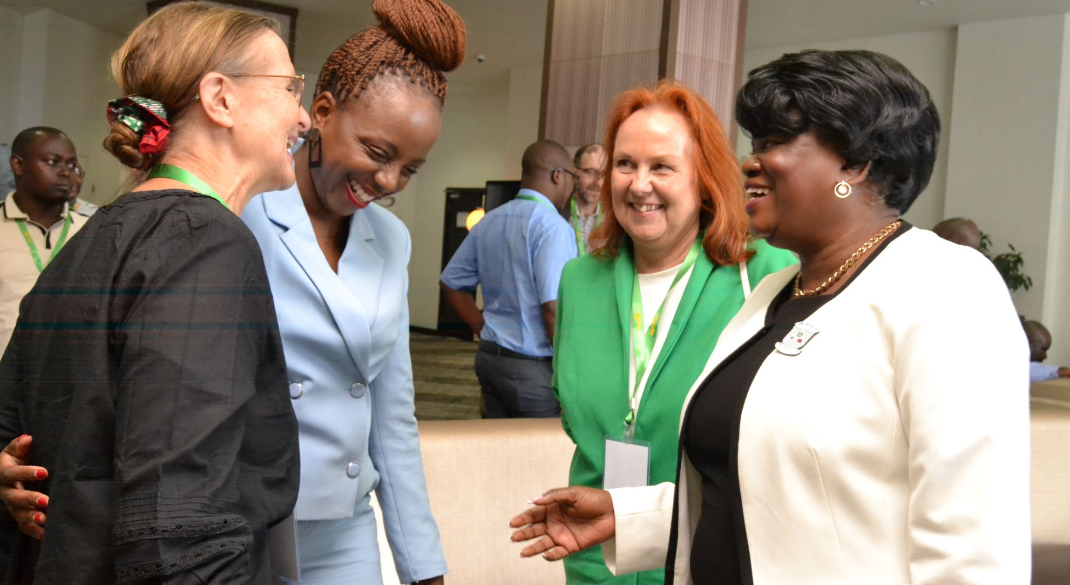MUST AgrGrow team maps learning activities

Posted By
James MphandePosted on
19th Nov, 2024
A team implementing the AgrGrow project at the Malawi University of Science and Technology (MUST) in conjunction with partner implementing universities have compiled results of a baseline mapping of learning activities.
AgrGROW is a partnership between High Education Institutions (HEIs) in Malawi, Uganda, Denmark, Finland and the Regional Universities Forum for Capacity Building in Agriculture (RUFORUM) for transformation of agro-entrepreneurship (agropreneurship) education.
The baseline mapping report has been shared on ResearchGate with the title: Collaborative Learning Ecosystems (CLEs) across selected African universities A Baseline Mapping of Learning activities in the AgrGROW Partner Institutions and can be accessed through the link: https://bit.ly/4fth8ZJ
The authors include MUST’s Blessings Masina, Wilson Mandala, Richard Nkhoma, Ellasy Chimimba, Edward Matengele and James Mphande.
The other co-authors are Ben Belden Mugula and Mihael Paul Nampala (Bugema University, Uganda), Kenneth Balikoowa (Makerere University, Uganda), Jennifer Ohemeng, Eija Laitinen, Tiiti Kamari (Häme University of Applied Sciences [HAMK], Finland), and Carsten Nico Hjortsø (University of Copenhagen, Denmark).
The exercise, among others, aimed at identifying and quantifying Collaborative Learning Ecosystem (CLE) activities in general (all types of learning activities) across African universities, especially Bugema University, Makerere University and MUST.
In terms of purpose, the study focused on mapping the different types and the extent of learning activities that take place across the university-society boundary within the context of the CLE. This was necessary to provide an understanding of what and how much is already happening within the CLEs and to identify barriers and facilitating factors hindering or promoting the use and development of CLEs.
While the results across the three universities were varied, one critical element was that they all had some levels of understanding and utilisation of CLEs in different ways and levels.
However, the study showed that the universities were limited by inadequate resources to engage in more CLE focused learning as the system requires more practical approaches and favours working with smaller groups of students.
In the case of MUST, lectures were the predominant method of teaching, indicating a strong preference for traditional instructional approaches.
“Group discussions (30) and hands-on activities (24) are also widely utilized, highlighting an emphasis on interactive and practical learning experiences. Field trips (20), case studies (23), and problem-based learning (25) reflect significant engagement with real-world applications and critical thinking exercises,” reads the report in part.
“In contrast, the flipped classroom approach (3) was the least utilized method, suggesting an area for potential development in adopting modern pedagogical strategies. Moderate usage of collaborative projects (9), peer teaching (9), online discussions (9), laboratory experiments (19), and internships (9) indicates a balanced integration of collaborative and experiential learning opportunities.”
The data on MUST showcases a diverse range of teaching methods, emphasizing traditional lectures and interactive activities while identifying opportunities for enhancing innovative teaching practices.
In terms of Problem-Based Learning (PBL), the analysis of data regarding its familiarity and utilization among lecturers at MUST, indicated most lecturers (66.7%), were both familiar with and had extensively used PBL in their teaching practices.
Additionally, 13.3% are familiar with PBL but have not utilized it in their teaching, suggesting potential opportunities for further integration of this approach.
“However, 20% of respondents indicated that they are not familiar with PBL, highlighting a need for awareness-building and training initiatives to promote the adoption of innovative teaching methods. These findings underscore the varying degrees of familiarity and utilization of PBL among lecturers, indicating a potential for enhancing pedagogical practices through targeted support and professional development opportunities,” adds the report.
In the end, the report says that a diverse range of collaborative learning activities (CLAs) were identified across the universities with different levels of engagement with industry partners.
“CLAs like internships and field trips were common across universities while some CLAs like Learn as You Earn [LAYE} were unique and only being practised in Bugema University. While some CLAs like internships could deliver high level of involvement of industry partners, these were mostly passive participants in other CLAs,” reads the report.
“Special projects were commonly implemented in Bugema, while MUST teachers implemented more group discussions and lectures. In the Makerere CLE, more teachers are involved in co-supervision, internships, field trips, and guest lectures, while Bugema teachers are involved in industrial attachments, field trips and special projects.”
Overall, more teachers are involved in the implementation of compulsory CLAs, across the partner universities as opposed to individually initiated CLAs such as guest lectures, group/cohort learning, and case studies.
The multiplicity of CLAs could be by design to enable diverse experience of learners but could also highlight a symptomatic lack of structure through which collaboration with industry can be achieved.
Previous